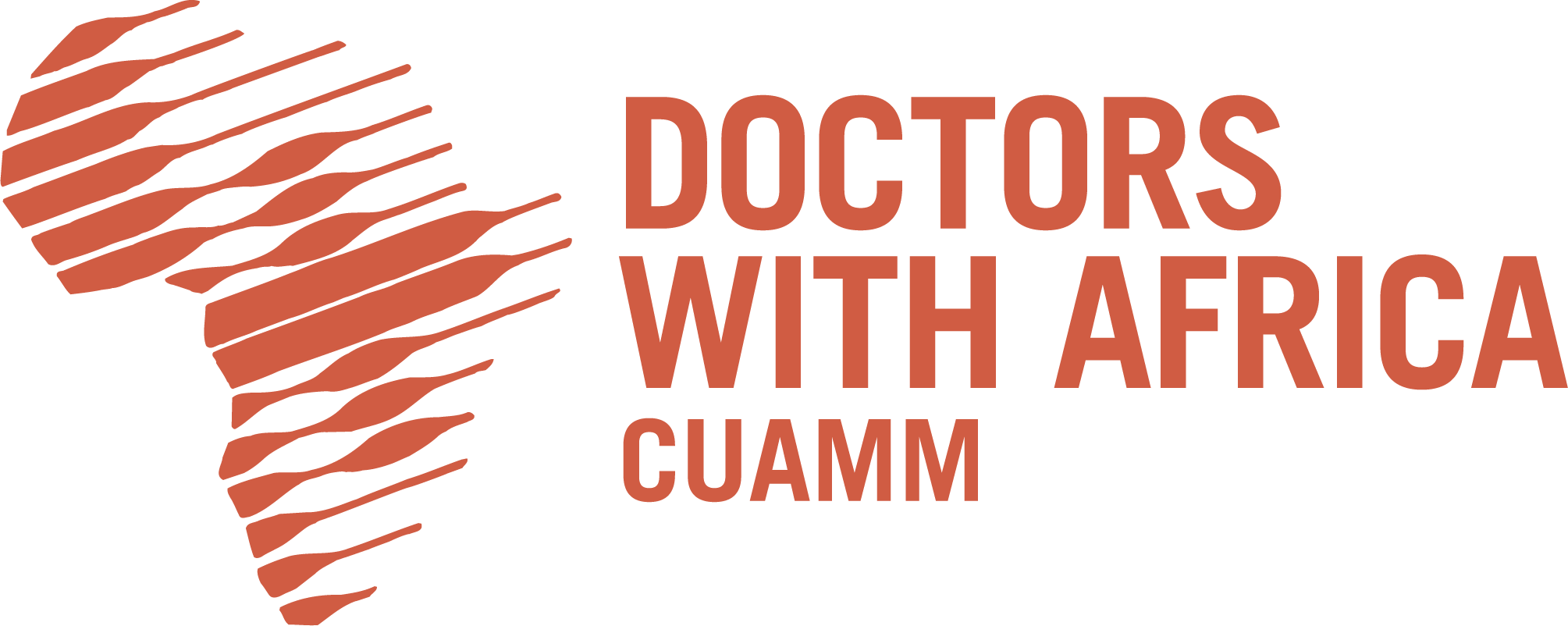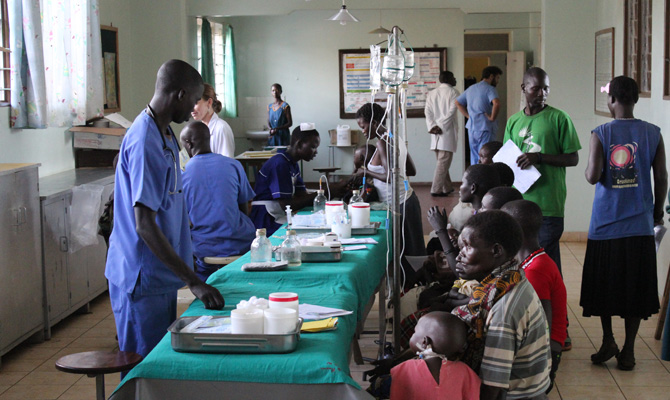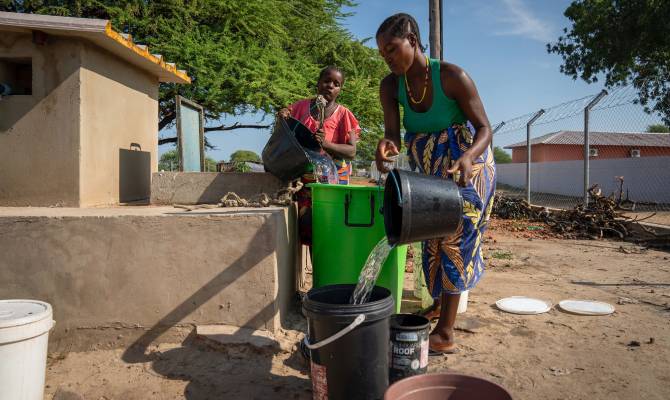Dr. Peter Lochoro is CUAMM’s Country Director for Uganda
«For me TB is… a lot of very big numbers. And behind those numbers lies the suffering of many, many patients, and the work of countless health care workers, doctors, nurses and medical officers. We’re dealing with big numbers also with regard to the cost burden of TB, for entire nations but most of all for the very poorest patients, on whom the disease can have a catastrophic economic impact. Because TB doesn’t just damage people’s health; it also has a major economic impact at the household level, and can destroy the lives of families when one member is sick for months, sometimes even years, on end. Even though the situation is improving and Uganda is one of the few high TB incidence countries that has achieved the well-known millennium goals, which means that in the last twenty years we’ve seen a major reduction in the burden of the disease and associated mortality. However, we’re still talking about significant numbers; let me just mention a few. Every year in Uganda there are some 61,000 new cases of TB and 10,900 TB-related deaths, half of which of people co-infected with TB and HIV. Karamoja is the region with the highest incidence of TB in Uganda; every year there are some 3,500 new cases to be identified and treated, and they include increasing cases of MDR. Unfortunately this is because the rate of people who stop their treatment early – and it’s a long and difficult treatment regimen – can reach peaks of 40%; that is, up to 40 patients out of 100 fail to complete their course of treatment and abandon health care facilities; we can’t find them and they become what is known as “lost to follow up”. Regarding the economic burden, treating a patient for drug-susceptible TB costs around 200 dollars in Uganda, but just imagine: treating an MDRpatient can cost more than 1,500 dollars, which is more than a Ugandan worker can earn in a year, so obviously it’s an unthinkable amount for the poorest. So for me – and surely for CUAMM in Uganda as well – what the fight against TB means is taking action to cut these numbers quickly and drastically. In line with WHO’s new strategy, we’re not just talking about stopping TB; we’re “united toendTB”. And ending TB means a single number: zero. Zero cases, zero deaths, zero dollars. That is, zero TB…»
Paolina is a patient with pulmonary tuberculosis in the TB Ward of Matany Hospital.
«Coughing, coughing, coughing, then fever and all that sweating at night. And then losing so much weight so quickly. In the end I came to Matany Hospital from Amudat – a long, long trip. It was hard in the beginning, but now things are much better. I’m not coughing anymore and I feel strong again»
Joseph is a patient with both TB and HIV who is being cared for at the Morulinga Health Centre and by the Matany Hospital’s TB Team.
«For me getting TB meant learning I had HIV too. I’d gotten very weak and begun coughing up blood all the time… I was nearly dead when they brought me to the hospital. They gave me lots of medicines and slowly I began to get better. It’s still not easy to accept having HIV; I’ve been worried about being ostracized when I go back home. But things are much better now and I’m glad to be alive.»
Lino is being treated for Multidrug-Resistant (MDR) TB at the Iriiri Health Centre; he’s looked after by the Matany Hospital’s TB Team.
«For me, TB meant taking lots of medicines for a very long time, but never getting any better, and then starting againand still not getting better. In the end I got fed up and stopped taking my medicines. But then I started coughing again, and there were other problems, too. They kept having me give them spit samples in those little tubes. ‘We need them for GeneXpert,’ they’d explain, but I didn’t understand. In the end they explained to me that I have a kind of tuberculosis that you can’t treat with normal drugs – MDR, they call it – so they started giving me a different kind of treatment. It lasts two years and you have to take so many pills that I can hardly remember exactly how many… 13, yes, that’s it; I have to take 13 a day. For the first six months I also get an injection every day except for Sunday. But TB has also meant getting to know the doctors and nurses working at Matany Hospital. They’ve taken care of me and even helped me with food and transport. ‘We’re doing DOT’, they told me. Staff Nelly will explain that; she can do it better than I can. Anyway, I went through some very hard times and I often thought about just giving up. But then I started to get better and to put on weight, and I even went back to work, selling tobacco.»
Victor works as a TB supervisor for CUAMM in the Napak District.
«For me TB is… my job! I work for CUAMM doing TB supervision at the health centres in the Napak District, and I collaborate with the Matany Hospital’s TB Team to manage their MDR patients. I’m responsible for making sure that the health centres meet specific quality standards, and helping to find new TB cases, especially cases of MDR [case finding], which means identifying and screening people who live with the patients and might have gotten infected themselves [contact tracing]. I also educate people about how to keep the disease from spreading [infection control]. All this means that I travel far and wide with the CUAMM and Matany Hospital TB Team, all around the Karamoja Region, visiting the health centres and the manyattas (the villages of the Karimojong people who live in the region), which are often very far-off and hard to get to».
Dr. Patrick Sali is a doctor who works in Matany Hospital’s Medical and TB Wards.
«Well… as a doctor working in the TB Ward of Matany Hospital, TB is first and foremost my job. But it’s not only that. In fact, you have to keep alert and remember that TB is in other wards, too – in the Medical Ward, in the areas where children are being cared for, even in the most far-off Health Centres. And in the villages, too. You can find it everywhere. The emergence of MDR strains that are resistant to first-line drugs reminds us how difficult it can be to treat TB patients. That’s why with the TB Team we’re doing lots of training work for the staff working in the Health Centres, carrying out mentorship activities for health care personnel and educating patients. So: vigilance and commitment, that’s what TB means in my life.»
Nelly is a nurse who works in Matany Hospital’s TB Ward; she implements the DOT strategy for the hospital’s MDRpatients.
«For me TB means the packet of drugs I gave Sylvia, one of our MDRpatients here at Matany Hospital,every day for six months, without ever missing a day, not even a Sunday. She’ll be taking them for another year and a half in a Health Centre closer to her village, in the Kotido District… 14 to 15 pills a day; and for the first six months she’ll also get a daily injection of Kanamycin – except for Sundays, as Lino mentioned earlier. This is what we call the DOT Strategy. DOT stands for “Directly Observed Treatment” and the job of us DOT nurses is to watch over and help patients to take their medicines, every day, and not to leave them until they’ve finished. You do it to make sure that the patients don’t stop taking their medicine early. TB has also meant being there for Sylvia as she described the side effects she was going through or talked to me about this disease that seems never-ending, and helping her deal with her anger when she just felt like quitting and leaving. But it also meant seeing the joy on her face when we brought her back to her village at the end of the intensive phase of the treatment.»
Currently a CUAMM JPO at Matany Hospital, Nicola Cocco is training to be an infectious disease doctor.
«For the last six months TB in my life has meant… Well, it’s meant the activities and research that are part of my work as Junior Project Officer (JPO) with CUAMM. It’s meant treating dozens of patients with Patrick in Matany Hospital, and with Victor in Napak District, and with the TB Team throughout the Karamoja Region, and bringing dozens of samples to the laboratory for sputum smear microscopyand GeneXpert (Simon will explain how that works). It’s meant trying to move ahead together with a project to tackle TB and DR-TB (drug-resistant tuberculosis), finding and treating the sick, helping them to overcome difficulties and making sure they don’t stop taking their medicines – which is the main reason for the onset of resistance. TB is the quintessential disease of poverty, and helping to prevent and treat it means not just improving health conditions but also tackling the social injustice faced by a poor people such as the Karimojong.»
Charles Nangiro Otyang is a radiologist at Matany Hospital.
«Thousands of X-rays of chests with all sorts of white spots on them, and X-rays of the spine where you see people’s vertebrae crushed by Pott’s disease [a disease caused by the tuberculous infection of the vertebral column]. Also lots and lots of abdominal ultrasounds. Lung infiltrates, caverns, lymphadenitis… theseare often the only tools doctors have in areas like this in order to diagnose TB».
Simon Amei works in the Matany Hospital laboratory.
«For me TB has meant staining lots and lots of slides as I look for mycobacterium, and deciding lots of people’s treatment with a “+”, “++” or “+++”. A year and a half ago CUAMM gave us a GeneXpert machine: it’s very easy to use, a sort of printer with four cartridges that can identify Mycobacterium tuberculosis DNA as well as resistance to rifampicin, a drug used to treat TB. You just dilute your sample – usually sputum, but also cerebrospinal fluid or gastric aspirate for children or some other biological liquid; certainly not blood or pus, though! – and load it into the slot. After two hours you’ve got your results (with more traditional culture-based methods, it took 4 to 8 weeks): “MTB Detected’ means that your sample is confirmed positive, and if the machine also shows you ‘RR (Rifampicin Resistance) detected’… well, that means you’ve identified another MDR patient… Finally, TB also means helpingthe TB Team to conduct contact tracing, collecting samples from people who live or are in frequent contactwith MDR patients.»





